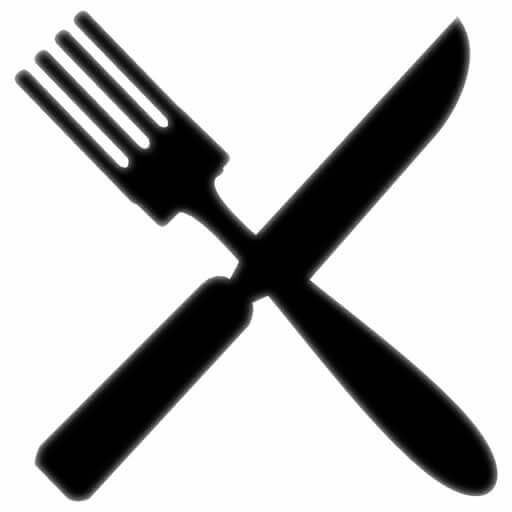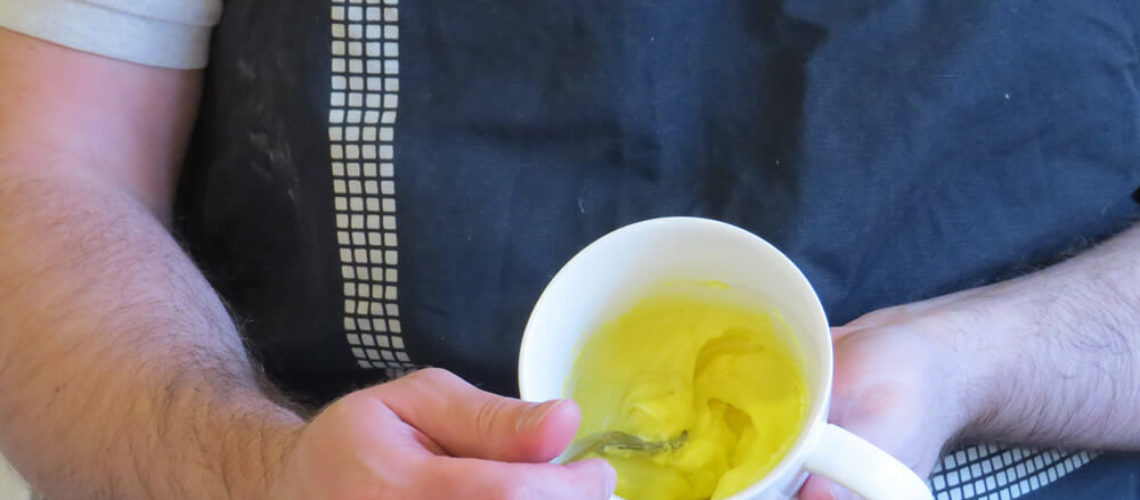TL;DR
- In large mug, mix yolks, whisk them well;
- Add half tblsp oil; Larger amounts can be added as the mixture grows;
- Whisk until smooth;
- Repeat alternating between oil and olive oil (2x oil, 1x olive oil);
- When mixture is hard and not sticking to mug walls, season with salt, lime juice, black pepper.
Keep reading to understand the process behind it all.
Homemade mayonnaise is one of the first things that my grandmother taught me. When I was 5, she started asking me to help her whisk the egg mixture, and soon after that I was taking over the whole process. Here’s how it’s done.
The Eggs
You’ll need one hard boiled egg yolk and one raw yolk. Make sure that the hard boiled yolk is very well cooked – I usually leave it in boiling water for well over 5 minutes. If you’re planning to make a lot of mayo to use over the span of 1 or 2 days, then I recommend 2 hard boiled yolks. Reserve the hard egg whites.
When separating the raw yolk from the white, make sure to reserve the white somewhere as you may need it in case of an emergency (more on that later). There are several ways to separate egg yolks from the whites. I use the method of cracking the egg and moving the yolk back and forth between the two shell halves.
Drop both yolks into a large mug. That’s where you’ll be making the mayo.
The Oils
Most of what makes up mayonnaise is oil. That is why having good quality oil is paramount. I usually choose Sunflower or corn oil as they don’t have an overpowering taste.
I also use about 1/3 extra virgin olive oil for that special kick. However, note that some olive oils are more bitter than others. I once had the idea of making mayo entirely out of olive oil and the end result was impossible to eat.
Don’t do like I did. Too much of a good thing, in this case, does not work.
Mixing It All
Let’s get to work.
At this stage you’ll have one (or perhaps 2) hard boiled yolk and one raw yolk in a large mug. Take a fork (preferably one with a wooden handle for comfort) and mash the hard boiled yolk. The less granules of yolk you end up with, the better. Mix it well with the raw yolk and start whisking.
Once you see that the yolks are well mixed, you can start adding oil. This is the tricky part. You *must* be careful to add only enough oil that it almost covers the yolk mixture. At the beginning of the process, this will be roughly half a tablespoon-full. Start with the regular oil, not the olive oil.
What creates the mayo is called emulsification. The oil molecules will grab on to the yolk molecules and start to solidify. If you add too much oil, the whole thing will break apart and recovering from that is really hard (you’ll need to add a bit of the raw egg white that you reserved, and the end result won’t be as tasty).
Whisk the oil and egg together until it’s smooth and you can no longer tell the oil from the yolk. Then whisk for another minute or so just to be sure the whole think won’t break apart. Then add more oil and whisk away. For every 2 repetitions of regular oil, do one with olive oil. The more you whisk, the more it grows in volume. At one point you will have a mug almost full of mayo paste. It will also start getting so solid that it’ll no longer stick to the mug walls. This is a good thing, as it’ll lose some of its solidness once we season it.
Seasoning
So your arm is tired from whisking, the mug is full, and the mayo is sticking to the fork in one big lump when you lift it, right? That’s the indicator that it’s time for seasoning.
Start with adding salt. How much depends on your preferences and what you’ll be using the mayo with. If it’s a mixture for something already salty, then take it easy. Whisk some more to get the salt evenly distributed in the paste. Feel free to try a bit to check on the saltiness, but note that it will be more salty than you think by the time we’re done seasoning. So make sure it’s a little *less* salty than you’d like, at this stage.
Now add the lime juice. If you don’t have any limes, use white vinegar, but lime juice is better. Add a little and whisk the mixture. You’ll see that it’ll get more liquid, which is why it was so important to have it really hard before seasoning. Give it a little taste and add more if necessary. It’ll help hide any strong oil flavour.
Now add some grated black pepper, mix it all and you’re ready to enjoy your very own homemade mayonnaise.
Practical Applications
Some of the dishes I use my mayo with (I’ll link these when I have the recipes for them):
- Deviled Eggs
- Tuna Salad
- Potato Salad
- Coleslaw
- Tartar Sauce
- Torta Fria (a Brazilian dish with bread, tuna, salmon, or chicken)

